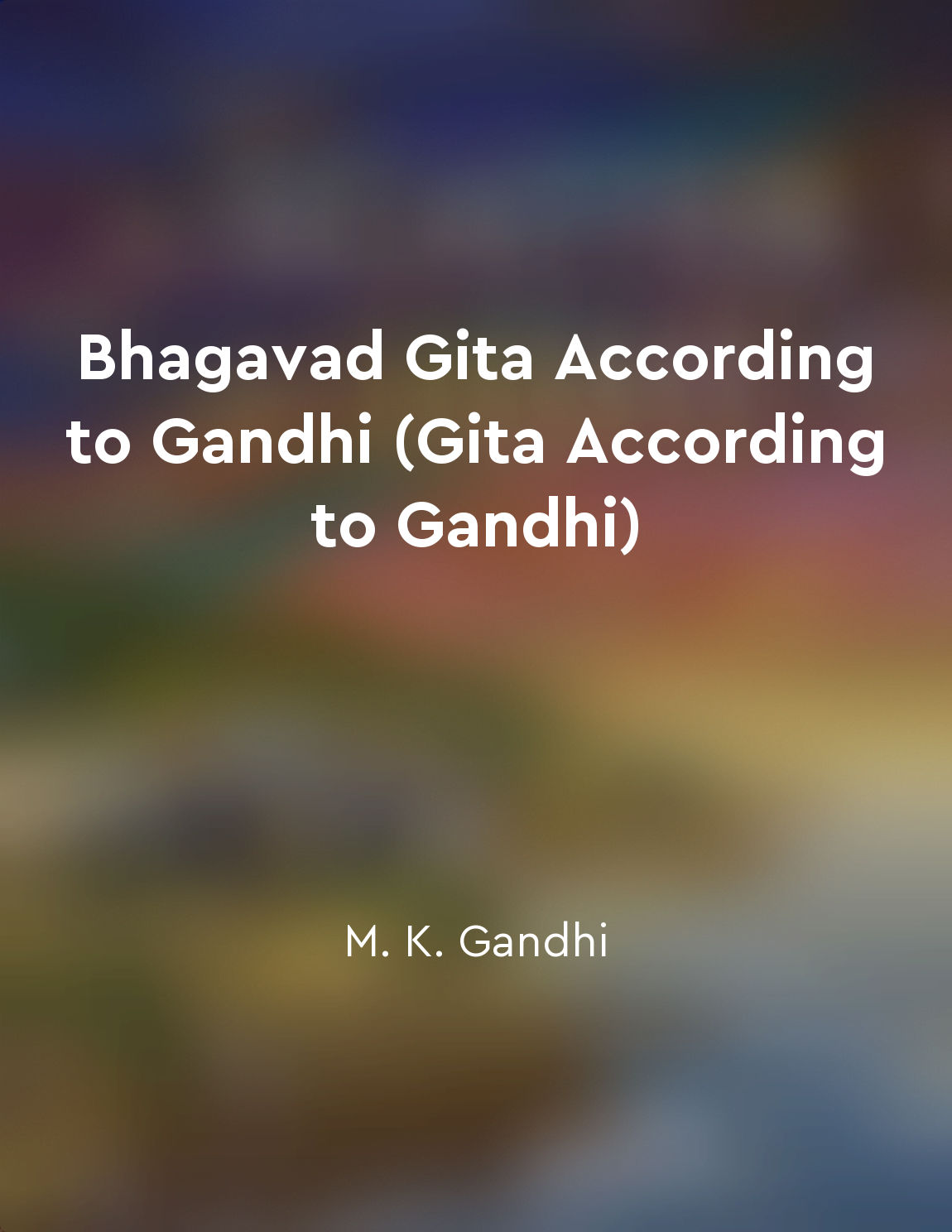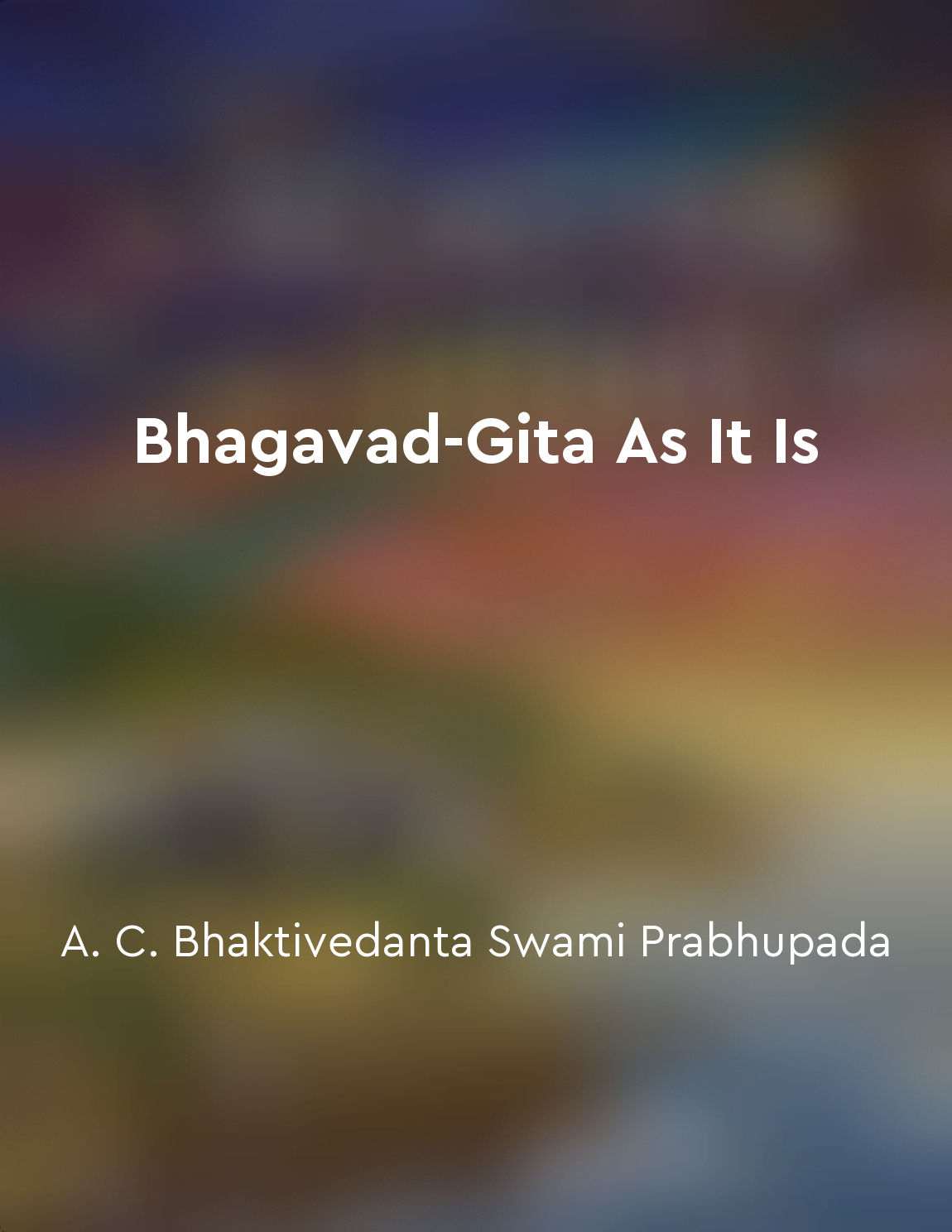Let go of attachments and aversions from "summary" of Bhagavad Gita According to Gandhi (Gita According to Gandhi) by M. K. Gandhi
The Bhagavad Gita teaches us to let go of attachments and aversions. In other words, we must learn to detach ourselves from the outcomes of our actions. This does not mean that we should stop caring about the results of our efforts, but rather that we should not be overly attached to them. By letting go of our attachments and aversions, we can free ourselves from the cycle of desire and disappointment. When we are attached to a certain outcome, we become fixated on achieving it at all costs. This can lead to stress, anxiety, and even unethical behavior. On the other hand, when we are averse to a particular result, we may avoid taking action altogether out of fear of failure. In both cases, our attachments and aversions cloud our judgment and prevent us from acting in the present moment. By letting go of attachments and aversions, we can focus on the task at hand without being weighed down by thoughts of success or failure. This allows us to act with clarity, purpose, and integrity. We become more open to new possibilities and more resilient in the face of challenges. In this way, we can achieve a sense of inner peace and fulfillment that is not dependent on external circumstances. To let go of attachments and aversions, we must cultivate a sense of detachment. This does not mean that we should become indifferent or apathetic, but rather that we should learn to accept whatever outcomes come our way with equanimity. We must learn to see success and failure as two sides of the same coin, and to recognize that both are temporary and fleeting.- By letting go of attachments and aversions, we can live more fully in the present moment. We can act with greater wisdom, compassion, and selflessness. We can let go of our ego-driven desires and fears, and instead align ourselves with the greater good. In this way, we can find true freedom and liberation from the cycle of birth and death.
Similar Posts
The true self is never born and never dies
The concept of the true self being eternal is a fundamental teaching in the Bhagavad Gita. According to Lord Krishna, the true ...

Cultivate devotion towards the Supreme Being
Cultivating devotion towards the Supreme Being is a fundamental concept in the Bhagavad Gita. It is the idea of developing a de...
Love is the ultimate truth in the universe
Love is the ultimate truth in the universe. It is the essence of all that is. Love is the energy from which everything is creat...
The path of devotion to the divine
The path of devotion to the divine, as elucidated in the sacred text, emphasizes the importance of unwavering faith and love to...
Persistence leads to success
The journey towards success is not always straightforward; obstacles and challenges often arise along the way. However, it is t...

Understanding the eternal soul
The concept of the eternal soul is a central teaching in the Bhagavad-Gita. According to the Gita, the soul is eternal and inde...
The Indus Valley civilization played a significant role in shaping Hindu beliefs
The ancient civilization that thrived in the Indus Valley thousands of years ago has had a profound impact on the development o...

Overcoming negative emotions and cultivating positive qualities is essential
In the eternal scripture of the Bhagavad Gita, the importance of overcoming negative emotions and cultivating positive qualitie...

Detachment from the fruits of actions leads to inner peace
Detachment from the fruits of actions is a fundamental concept discussed in the Bhagavad Gita. This teaching emphasizes the imp...
True nature of soul discussed
The Bhagwat Gita delves deeply into the true nature of the soul, providing profound insights into this eternal essence that res...

